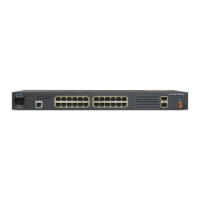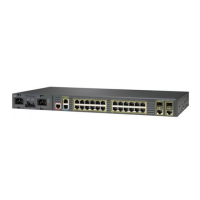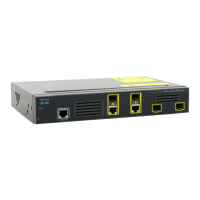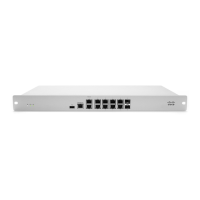2-26
Cisco ME 3800X and ME 3600X Switch Command Reference
OL-28238-01
Chapter 2 Cisco ME 3800X and ME 3600X Switch Cisco IOS Commands
channel-group
channel-group
To assign an Ethernet port to an EtherChannel group, use the channel-group command in interface
configuration mode. To remove an Ethernet port from an EtherChannel group, use the no form of this
command.
channel-group channel-group-number mode {active | auto [non-silent] | desirable [non-silent] |
on | passive}
no channel-group
PAgP modes:
channel-group channel-group-number mode {auto [non-silent] | desirable [non-silent]}
LACP modes:
channel-group channel-group-number mode {active | passive}
On mode:
channel-group channel-group-number mode on
Syntax Description channel-group-number Specifies the channel group number. The range is 1 to 26.
mode Specifies the EtherChannel mode.
active Unconditionally enables LACP
Active mode places a port into a negotiating state in which the port initiates
negotiations with other ports by sending LACP packets. A channel is
formed with another port group in either the active or passive mode.
auto Enables the PAgP only if a PAgP device is detected.
Auto mode places a port into a passive negotiating state in which the port
responds to PAgP packets it receives but does not start PAgP packet
negotiation. A channel is formed only with another port group in desirable
mode. When auto is enabled, silent operation is the default.
desirable Unconditionally enables PAgP.
Desirable mode places a port into an active negotiating state in which the
port starts negotiations with other ports by sending PAgP packets. A
channel is formed with another port group in either the desirable or auto
mode. When desirable is enabled, silent operation is the default.
non-silent (Optional) Use in PAgP mode with the auto or desirable keyword when
traffic is expected from the other device.
on Enables on mode.
In on mode, a usable EtherChannel exists only when both connected port
groups are in the on mode.
passive Enables LACP only if a LACP device is detected.
Passive mode places a port into a negotiating state in which the port
responds to LACP packets it receives but does not initiate LACP packet
negotiation. A channel is formed only with another port group in active
mode.

